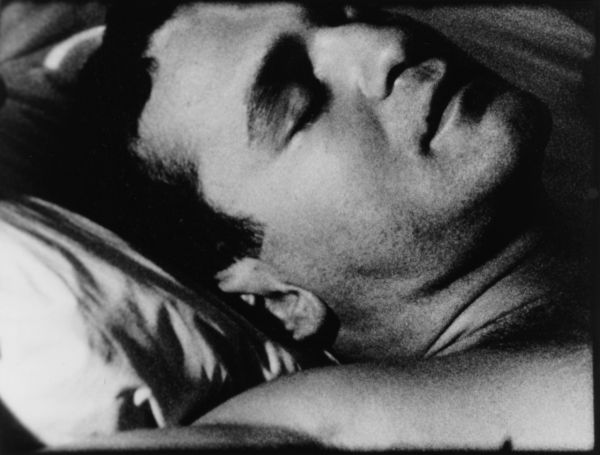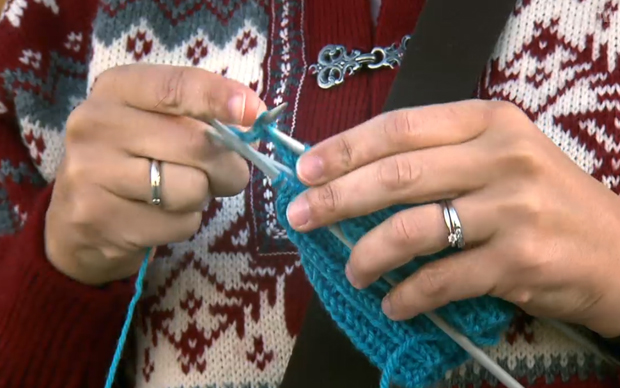The Phenomenon of „Slow Television“ – it is the Reindeers‘ Turn
After a marathon knitting sweaters and boat trips on the Norwegian fjords that lasted days, the Norwegian public television NRK is planning its next instalment of Slow TV, this time they have turned to the animal kingdom. At the beginning of this summer, they announced that in the spring of 2017 they will broadcast reindeer moving from the mountains to the coast on their second channel NRK2 for an entire week. "It will be extremely slow and will lead the audience back to nature," said the project leader Thomas Hellum, Development Manager for NRK, belonging to the German agency DPA. However, to carry out such a plan the NRK must overcome a number of obstacles. For example, in the far north of Norway there is a problem with satellite reception. "We also are not able to use any helicopters because it would disturb the animals," says the producer Hellum. In addition to all of this, it is impossible to schedule the exact starting date for the broadcast according to him- it will have to be spontaneous because nobody knows exactly when the reindeer will start their journey. Some herds are on the move two to three weeks. Nevertheless, the television will follow the trail of a selected herd only for seven days. "Otherwise it would be too slow, even for Slow TV," explains Hellum.
Slow TV, or Slow television, has become a phenomenon in recent years. The programs, which were initially described as strange signs of television saturation, began to appear in other countries and the hypothesis that Norwegian viewers differ from the rest of the world ceased to exist.
What exactly is Slow TV? Let us rather start by explaining what Slow Television is not. Setting up a camera somewhere and scanning the selected location, while providing the sound and visuals to viewers via internet streaming or a designated television station does not mean that one is producing Slow TV. In this case, it would be more appropriate to call it an observation program or stream. One of the cornerstones of the genre is that it offers some kind of ending to a plot. The spectator knows that the creators offer some (albeit very long) narrative arc that has a beginning and an end - whether it's a boat trip or knitting sweaters. Slow TV, implemented in linear television, is also quite a technically challenging matter - it uses several cameras, alternates different types of shots ranging from close-ups to an overview and also has a certain rhythm.
The reasons as to why the audience seeks such programs differ. Some are lured to their television screen with a hope of vicariously experiencing the same things that others experience in real life, others seek peace and an escape from hectic everyday life in Slow Tv, or they appreciate the fact that they witness the creation of something- often thanks to the skills of human hands.
Warhol the Pioneer of Slow TV
When searching for the history of Slow TV, two films of Andy Warhol are often mentioned. The first is a five hours and twenty-five minutes long recording, Sleep, from the year 1963, in which he filmed his sleeping friend, John Giorno. Long static shots alternated with various shots capturing details and different angles of the sleeping man. The second is the film, Empire, from 1964 – a six hours and thirty-six minutes long shot of the Empire State Building in New York beginning at sunset and the plot consists solely of lights being turned on and off in windows. Everything ends late at night when most of surrounding lights and the lights in the windows turn off, and subsequently the picture is plunged into complete darkness. The film was shot with a frame rate of 24 frames per second, but projected at a rate of 16 frames per second, so the projection period was prolonged to last eight hours and five minutes.
The history of Slow TV as a television genre dates back to the mid-eighties, when the New York cable network, which included over 500 programs, had a specialized channel that aired nothing more than a shot of a burning fireplace. It was targeted at an audience that desired to have a fireplace at home, but the layout of their apartments did not allow for it. Therefore, all they needed to do was create a fireplace prop and strategically place their television set in place of the fire. However, in this case, the above-mentioned requirement of having some kind of finality for the plot was not met.

Sleep (Andy Warhol, 1963)
A few years later, the origins of slow TV could be found in the night program of provincial public television stations in Germany. All done in response to the decision of commercial televisions, to extend their broadcasting time to 24 hours by airing reruns of afternoon and evening programs. In 1992, the now non-existent ORB public television (it broadcasted for Brandenburg, and in 2003 it merged with the Berlin Television to create the newly named RBB) created the program Aquarium – in place of producing one view it showed different long shots capturing an aquarium full of fish all night long. Here, too, it lacked the principle of having a plot ending, comparable to when the Bavarian Television (BR) filled its nightly broadcast with footage of space (taken from NASA) two years later and created the show Space Night. What was originally planned as a filler had become a cult. Aquarium, stayed on the air until 2004 and occasionally had a larger audience than the programs scheduled before it. Space Night, has continued to be on air up to today.
TV for the Insomniacs
Real Slow TV appeared in Germany in 1995, when the first public television - ARD - installed cameras over the heads of drivers in locomotives and created the series, Die schönsten Bahnstrecken Deutschlands. The regional stations B1 (Bavaria) and SFB in Berlin enabled viewers to watch the Bahn lines and metro in the same manner. MDR (it broadcasts for Saxony, Thuringia and Saxony-Anhalt) charted Leipzig tram lines in the same fashion. The commercial Vox airs recordings of dance parties from around the world, under the name Rave Around The World.
All of this was happening on the screen, however, only when the evening program ended- meaning mainly at night. Norwegians undoubtedly pioneered the field when they dared put Slow TV in prime time and broadcasted these shows not as pre-recorded material, but live television. "We started as if we were going to the Olympics: highly professional," the Berlin daily Der Tagesspiegel cited Thomas Hellum in December.
"In the newsroom, we developed the idea of doing a show that would be the reconstruction of the German invasion of Norway on the anniversary of this gloomy event. As a joke, we wanted to air it the whole day, minute by minute. The idea did not pass, but it had captivated us," recalled Hellum in an interview for idnes.cz this April.
The Technological Challenge
Since then NRK has realized a number of instalments for Slow TV. Nasjonal vedkveld, showed people preparing wood for a bonfire. Programs such as Lakseelva - Minutt for minutt, Nasjonal strikkekveld and Piip-show – even those were broadcasted live. A live broadcast of a ship voyage across one of the most known fjords was a huge success.

"It's not taken lightly, you have to plan something truly attractive, even if it is something ordinary. Then you must not underestimate the script. Even knitting can have a plot. Especially, when you sit a businessman in a suit, who is also knitting, among old ladies. You also must have excellent technique, the train ride was shot using four cameras of superb quality. You have to think about your audience and you have to come up with something for them," says Thomas Hellum.
One of the most celebrated programs is actually the longest. It is a documentation of a ship voyage around Norway - Hurtigruten – it is 2700 kilometers long. The ship has been transporting mail and passengers since 1893. Securing such a broadcast was a technological challenge, not only because 11 cameras were used in the ship. Some hung on wire structures, others were used for providing detailed images of things many kilometres off in the distance. All the footage went below deck via wireless transfer, where teams of editors took turns. The live broadcast lasted nearly 135 continuous hours and employed 23 people. The queen of Norway herself came to say hello to the crew at the end of the voyage. The show was watched by 3.2 million viewers - yet Norway only has nearly 5 million citizens.
Slow TV Has Also Come to the Czech Republic
Slow Television is now coming to other countries. The BBC began producing shows, presented under the title of BBC Four Goes Slow. The first show was a two-hour long boat trip along one of Britain's historic waterways: the canal Kennet - Avon. When asked about the reactions of the audience, the series producer, Clare Patterson, told the American professional server Adweek, "I think the show offered them an escape from everyday life." Most of the nearly 600 thousand Brits who watched the voyage on the channel would probably agree. Just for comparison - the average audience of BBC Four is 340,000 viewers.
However, we do not need to go to Britain, we now have Slow Television even here in the Czech Republic. The internet television, Playtvak.cz, launched a Slow TV project on June 30, 2015. By the end of July, it had already surpassed one million views. The Czech slow shows are produced by the TAKTIQ Communications Company for the Mafra Company which runs the server for Playtvak.cz. Even though part of the program menu is rather just simple observational television, we can also find shows that really do meet the parameters of Slow TV on offer. For example, there was the two-day clock marathon during which the famous Prague clockmaker, Luděk Seryn, repaired a rare historic timepiece in front of the audience. The first Czech 'slow' program was a one-day live broadcast of the fight between macrophages and E. coli bacteria, which takes place every day in the human body. The Czech specialty appears to be geocaching (treasure hunting using coordinates).
It is likely that after appearing on internet televisions, the genre of Slow TV will make its way to the screens of some of the domestic linear channels.
The author works as a specialist - Analyst of formats for Czech Television
Transalated by Floriana Skorulská



